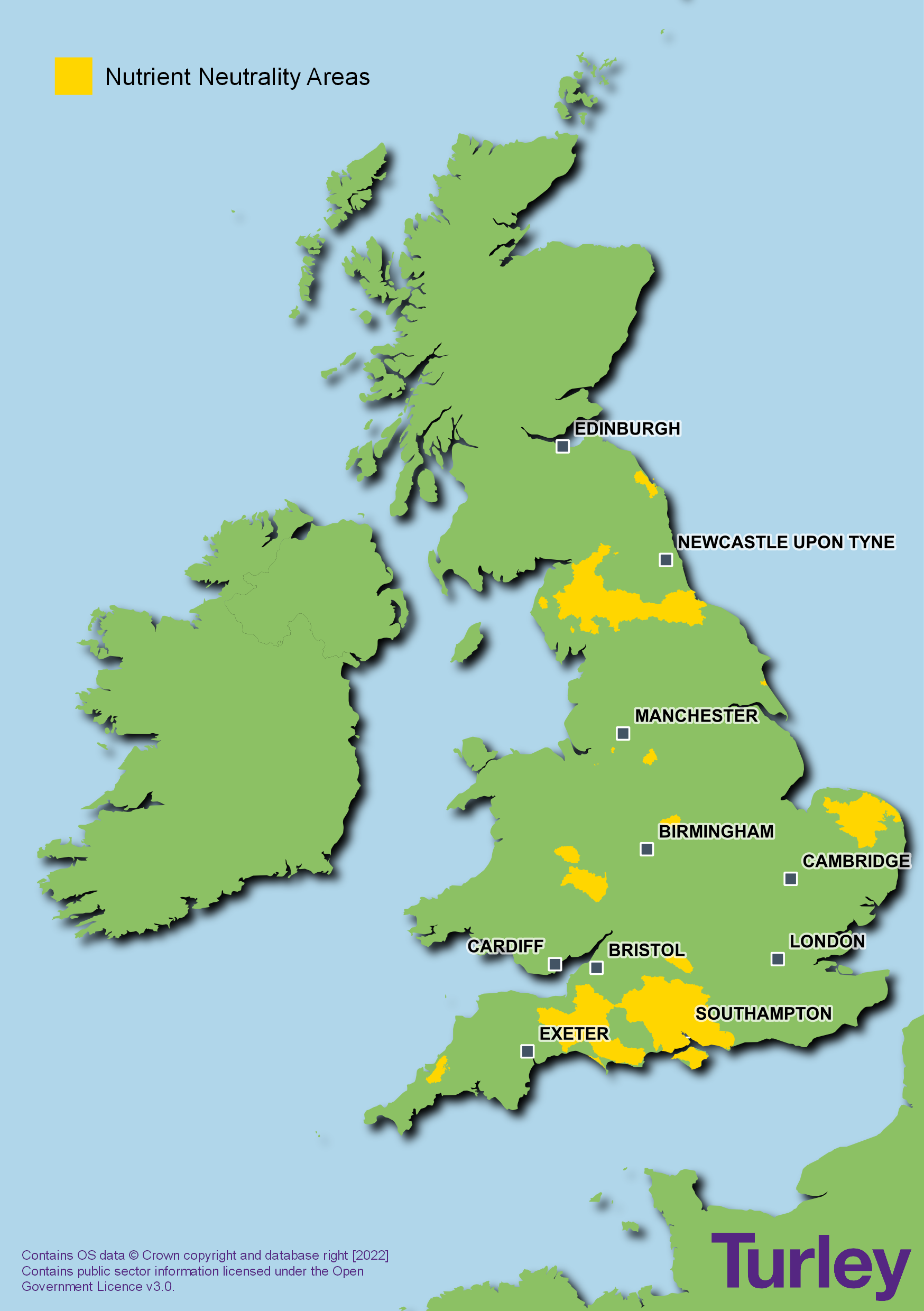Comment
Nutrient neutrality: What happens next?
Back in March 2022, we reported on Natural England’s identification of a significant number of additional catchment areas across England where new overnight accommodation would need to demonstrate nutrient neutrality. 74 Local Planning Authorities (LPA’s) are now affected to some degree, with at least 100,000 homes estimated as being held up in applications, reserved matters approvals, or discharge of conditions applications. For many, it is unclear when these will be able to be ‘unlocked’, and they sit stalled in the LPA’s in-trays.
Click here to read our March 2022 update.
In areas such as the Solent, where the issue first came to light, a steep learning curve has meant that positive solutions have now been identified by LPA’s, developers, and private landowners alike to provide appropriate mitigation. This has included retrofitting water efficiency measures to existing housing stock and purchasing credits from off-site mitigation schemes designed to remove nutrients.
Some good news was issued by Natural England very recently, confirming that after further analysis new homes and overnight accommodation will have an ‘insignificant’ impact on the level of nitrates and phosphates in the Stour Valley and Stodmarsh catchment areas. The embargo on new housing has therefore been lifted within the relevant catchment areas.
The map below provides an overview of the affected areas:

It is reasonable to conclude that many of these measures could be equally applied to the newly identified catchments. But it is likely to take time in some areas to get the necessary mitigation schemes in place and formulated in such a way as to appease Natural England, not least in terms of the mechanics of any legal agreements required. Further delays are unfortunately inevitable.
Equally there have been some Government announcements in advance of Boris Johnson’s departure primarily intended to reduce the burden on housebuilders to provide mitigation. The most significant elements of the statement are:
- a new legal duty on water companies in England to upgrade wastewater treatment works by 2030 in ‘nutrient neutrality’ areas to the highest achievable technological levels (to be incorporated as an amendment to the Levelling Up and Regeneration Bill); and
- a new nutrient mitigation scheme established by Natural England, helping wildlife and boosting access to nature by investing in projects like new and expanded wetlands and woodlands.
However, there remains considerable uncertainty about unlocking applications and delivering much needed housing in the short term: how much additional funding will be available via the nutrient mitigation scheme and how long will this take to deliver? How do wastewater companies factor enhancements into their forward programme and ultimately who will pay?
This combined with the distinct possibility that more catchments will be subject to nutrient mitigation given Natural England’s ongoing monitoring of water quality in several other rivers and waterbodies.
Less helpfully from a housebuilder perspective, the statement also confirmed:
- a rejection from the Secretary of State of legal opinions arguing that mitigation should not be applied to reserved matters or discharge of conditions applications; and
- a recognition that in affected areas, LPA’s can assume that the proposed mitigation works will happen within the next five years thereby allowing such schemes to be included with their five-year housing land supply (this is to be implemented by way of as yet awaited planning guidance updates ‘over the summer’).
And what of Liz Truss’s announcements to remove ‘Brussels red tape’ such as nutrient neutrality, prior to her appointment as Prime Minister?
It remains to be seen whether this will or indeed can be implemented, what legislative changes would be required, or whether it is seen as a priority currently.
We suspect Natural England will be keen to enter the debate on the side of the environment so we can expect much more activity on this over the coming months.
Click here to listen to Director, Simon Packer on the 50 Shades of Planning podcast where he recently discussed this and other key matters surrounding nutrient neutrality.
To learn more about nutrient neutrality, including how it could affect your development please contact Simon Packer or Jamie Hanna.
28 September 2022